MIG welding is a versatile process that can be used to join a wide variety of materials, including zinc.
This process requires a special gas-shielded welding technique in order to properly join zinc components.
Knowing the best practices for this process is essential for achieving a successful weld.
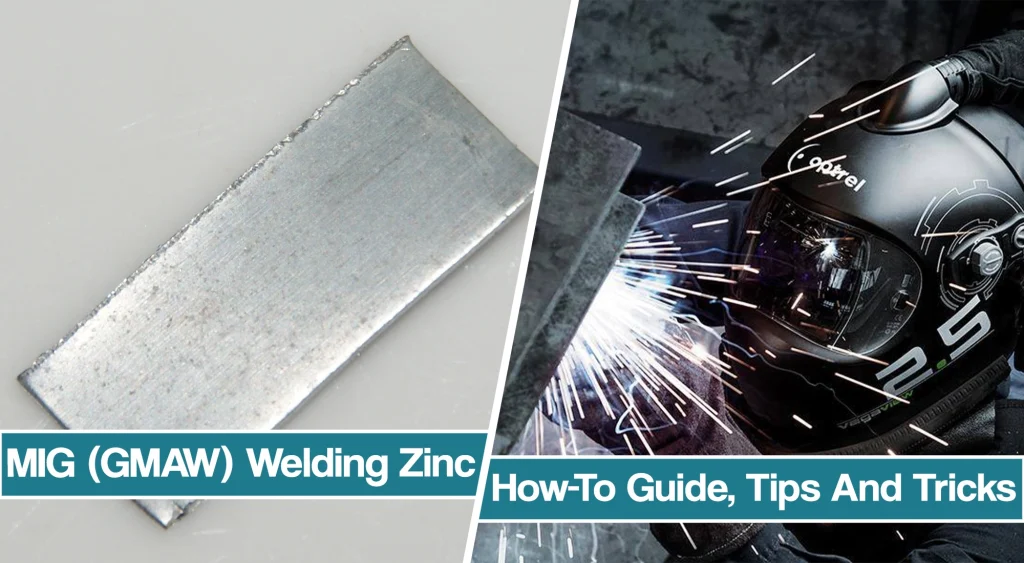
From understanding the potential hazards of welding galvanized and zinc-coated steel to following tips for MIG welding zinc plating, this article will provide an overview of how to MIG weld zinc. By following these guidelines, you can ensure that your welding projects are safe and successful.
Properties And Applications Of Zinc
Zinc is a bluish-white, lustrous metal that is relatively abundant in the Earth’s crust. Zinc has a melting point of 419.53 °C and a boiling point of 907 °C. It is a fairly reactive metal, which means that it reacts readily with other elements and compounds, including air and water. This reactivity also makes zinc useful in a wide range of industrial applications.
One of the most important properties of zinc is its ability to resist corrosion.
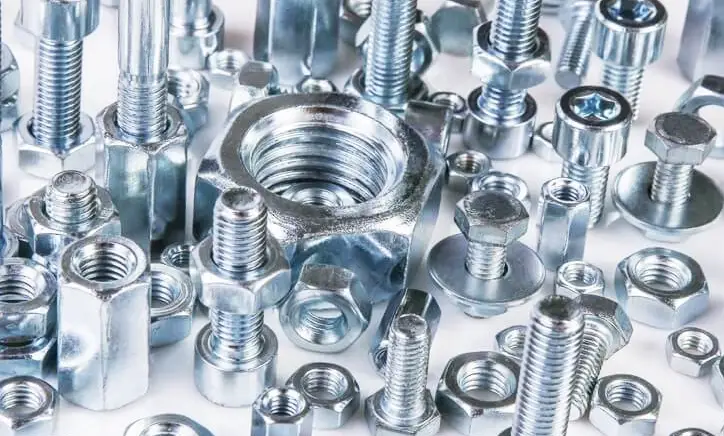
This makes it an ideal material for use in galvanizing, where it is coated onto steel to protect it from rust and other forms of corrosion. In fact, about 50% of the world’s zinc is used for this purpose. In addition, zinc is used to make a wide range of products, including batteries, alloys, and pigments.
Weldability And Health Risks Of Welding Zinc
Welding zinc is possible using metal inert gas (MIG) welding, however, it is not without its challenges. Zinc has low weldability due to its high melting point and high thermal conductivity, which can make it difficult to maintain an even arc resulting in weak welds. Furthermore, zinc-based alloys are prone to porosity and slag entrapment, which can make welding difficult.
When welding zinc, it is important to use a gas-shielded process such as MIG welding to ensure that the area around the weld is protected from oxygen and other airborne contaminants which can weaken the weld.
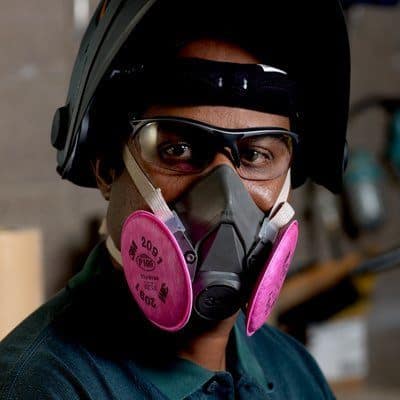
It is also important to use adequate ventilation in order to reduce the risk of inhalation of zinc fumes and other toxic gases generated during welding. The American Welding Society recommends using a fume extractor to reduce exposure to potentially harmful substances.
When welding galvanized or zinc-coated steel, it is important to take additional precautions as the heat generated during welding can vaporize the zinc coating and release dangerous gases, including zinc oxide fumes. The American Industrial Hygiene Association recommends using protective equipment such as respiratory protection, eye protection, and skin protection when welding galvanized or zinc-coated steel with a zinc layer. Additionally, the National Institute for Occupational Safety and Health (NIOSH) recommends wearing a properly fitted air-purifying respirator with an organic vapor cartridge to protect against inhalation of zinc fumes during welding.
How To MIG Weld Zinc And Zinc Plated Steel – Overview
MIG welding zinc and zinc-plated steel require a special process due to the high levels of zinc fumes generated.
You can use a gas-shielded approach to protect the welder from fumes and contamination. Before welding, it is important to make sure that all surfaces are clean and free of oil or other contaminants. Then, set the power output and wire feed speed according to the specifications of the material being welded.
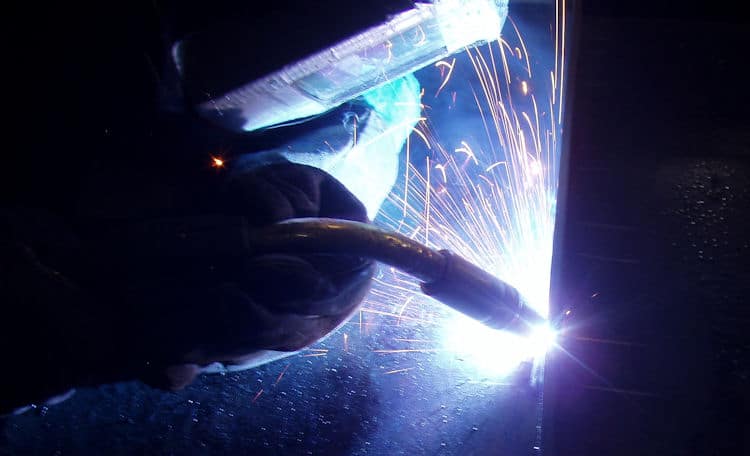
When welding zinc-plated steel, it is important to use a short arc length, as this reduces the amount of spatter created. The current should also be adjusted so that it is slightly higher than usual to help ensure proper penetration into the base material. It is also important to use a lower voltage setting since higher voltage can cause burn through in thinner materials.
For optimal results, use an Argon/CO2 shielding gas mixture when welding zinc or zinc-plated steel. This helps reduce porosity and spattering while providing an even heat distribution over the weld area. Additionally, consider using a drag technique when MIG welding, as this has been proven to reduce fume emissions associated with welding galvanized steel.
Always wear proper personal protective equipment (PPE) when welding galvanized or zinc-plated steel, including a welding helmet, gloves, jacket and respirator. Exposure to high levels of zinc fumes can cause serious health issues such as metal fume fever, so following safety guidelines is essential for any welder working with these materials. Following these steps can help ensure successful and safe MIG welding of zinc and zinc-plated steel.
MIG Welding Wire For Zinc
The best MIG welding wire for welding on zinc is a zinc-coated wire, also known as a “galvanized wire.” This type of wire is designed specifically for welding on galvanized steel, which is coated with a layer of zinc to protect it from corrosion.
Zinc filler rods are typically made from mild steel and coated with a thin layer of zinc. The zinc coating provides a protective barrier between the steel and the atmosphere, which helps to prevent corrosion and rust. The wire is also formulated with specific chemical compositions to ensure a strong and effective weld on zinc-coated materials.
When welding zinc-plated steel, another popular option for MIG welding on zinc is the Lincoln Electric SuperArc L-56 .030-inch wire. The increased silicon content helps to produce a more fluid weld puddle, which is beneficial when welding on thin or irregularly shaped pieces of zinc-coated material.
Shielding Gas For MIG Welding Zinc
Shielding gas is an essential component of MIG welding, as it protects the weld area from atmospheric contaminants such as oxygen, nitrogen, and carbon dioxide.
When welding zinc, selecting the right shielding gas is crucial to ensuring a strong and effective weld. The best shielding gas for MIG welding on zinc is typically a mixture of argon and carbon dioxide, commonly known as C25.
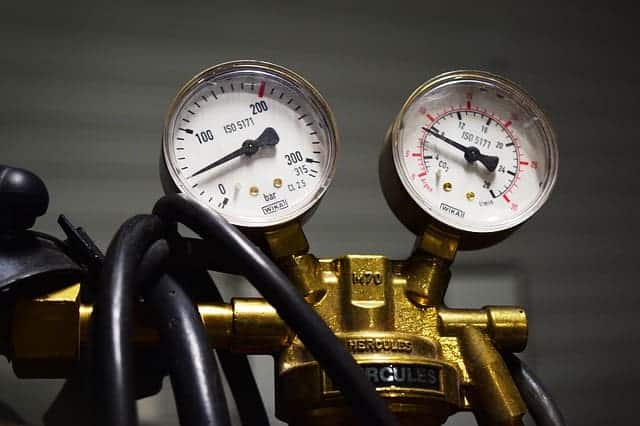
C25 is a blend of 75% argon and 25% carbon dioxide. This mixture provides a stable arc and good penetration, making it ideal for welding on zinc-coated materials. The argon in the mixture provides a protective shield around the weld area, preventing oxidation and ensuring a clean, strong weld. The carbon dioxide helps to stabilize the arc and increase penetration, allowing for a deeper weld on thicker materials.
Weld Preparation And Cleaning
When MIG welding zinc-coated steel, the proper weld preparation is critical for achieving a successful outcome. Proper weld preparation includes preparing the surface of the metal for welding, selecting the right welding process and materials, and using the right techniques to ensure that the weld is strong and free of defects.
First, it is important to clean any dirt, grease, or other contaminants off of the surface of the steel before welding. This can be done using a wire brush, grinding wheel, or chemical cleaner. The surface should then be lightly sanded to create a rough surface that will help ensure proper adhesion of the weld material.
MIG Welding Technique For Zinc
It is important to use the correct technique when MIG welding zinc-coated steel. This includes setting the correct voltage and amperage according to the manufacturer’s recommendations, maintaining an arc length of 1/8” to 3/16”, and ensuring that proper shielding gas coverage is achieved during welding.
Additionally, it is important to maintain an appropriate travel speed when welding – typically between 10 and 20 inches per minute – so that proper penetration and fusion are achieved in the joint.
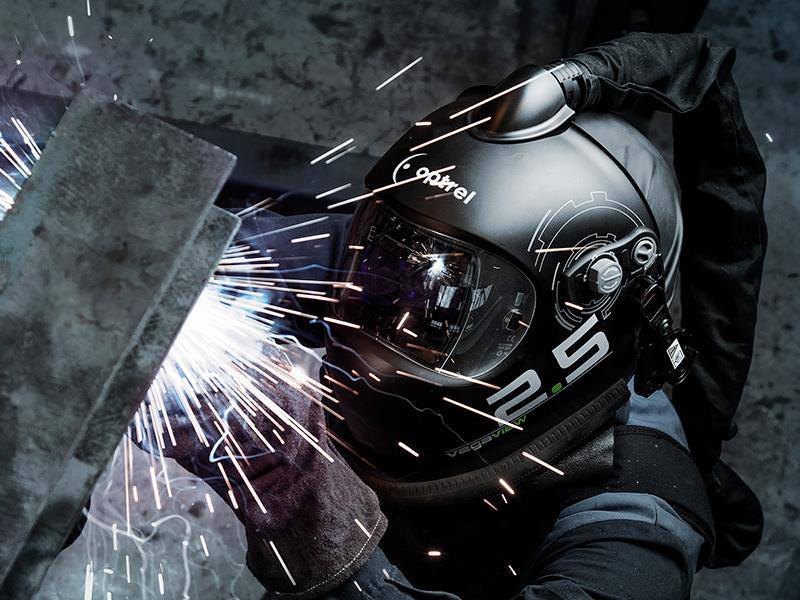
The appropriate settings for MIG welding zinc will depend on the type of material being welded, as well as its thickness and size. Generally speaking, a higher wire feed speed and lower voltage should be used for thinner materials (less than 1/8 inch thick), while thicker materials require lower wire feed speeds and higher voltages. It’s also important to adjust the gas flow rate according to the shielding gas being used; typically, a flow rate of 25-30 cubic feet per hour (CFH) is recommended for MIG welding zinc.
Post-Weld Treatment
When MIG welding zinc, it is important to follow proper post-weld treatment in order to ensure the weld is strong and will not corrode over time. The first step of post-weld treatment is to clean the weld area. Once the area has been cleaned, it should be inspected for cracks or other defects. If any are found, they should be repaired before proceeding with the next steps.
Next, it is important to apply a protective zinc coating to the weld area in order to prevent corrosion. This can be done by using a zinc-rich paint or zinc spray specifically designed for welding applications. It is important to choose a product with a high zinc content so that it provides adequate protection against corrosion. Additionally, any areas that will not be coated with paint should be covered with an anti-corrosion tape or wax-based sealant.
It is important to properly cool down the weld area in order to prevent warping or deformation of the metal. This should be done by allowing the metal to cool down slowly on its own or by using a cooling agent such as water or oil. It is also recommended that any excess heat from the welding process is dissipated by ventilation and fans in order to further reduce the risk of warping and distortion.
Tips For MIG Welding Zinc
- Be sure to use a gas-shielded process when welding zinc, as this will help protect the weld from oxidation and other contaminants.
- Choose the right filler material – zinc-based filler metals work best for MIG welding zinc.
- Use the correct welding parameters – use a higher voltage setting and lower wire speed for welding zinc than you would for other metals.
- Wear the appropriate protective gear – use a respirator with a P100 filter to protect yourself from fumes and zinc oxide particulate when welding zinc.
- Clean the base metal thoroughly – use a wire brush or sandpaper to remove any dirt, rust, or other contaminants before beginning your weld.
- Use the right shielding gas – argon-based mixtures work best for MIG welding zinc, as they provide the most complete protection against oxidation.
- Preheat the base metal – preheating the base metal before starting your weld will help ensure that the welds are strong and free of defects.
- Monitor your welds carefully – if you weld zinc-plated steel, watch for any signs of porosity or cracking, and adjust your parameters as needed if these occur.
- Allow for sufficient cooling time – allow the welds to cool completely before removing them from the jig or fixture to ensure that they are adequately cooled and not subject to thermal shock or distortion.
Conclusion
Gas Metal Arc welding zinc is a challenging process that requires specialized knowledge and skills. It is important to understand the various hazards associated with welding zinc-coated steel, such as the production of toxic fumes of zinc vapor, molten zinc and zinc dust, in order to properly protect oneself from potential harm. So always wear a welding mask and proper respiratory system.
By following the guidelines outlined by our article and safety organization, you can ensure a safe and successful welding experience, similar to Gas tungsten arc welding or Stick welding.
Resources
- https://weldrun.com/can-you-weld-zinc/
- https://www.adamsgas.co.uk/2020/03/08/how-to-weld-zinc/
- https://blog.thepipingmart.com/metals/how-to-weld-zinc-sheets/
- https://www.lincolnelectric.com/assets/US/EN/literature/mc1595.pdf
- https://www.weldingsuppliesfromioc.com/blog/how-to-weld-galvanized-steel-and-not-die/




